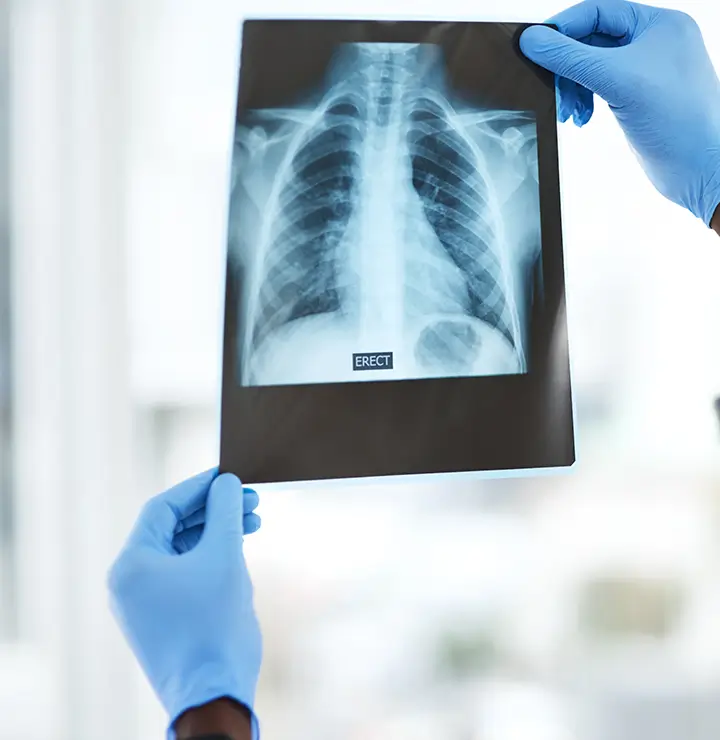Myasthenia Gravis and Thymoma
Myasthenia gravis (MG) is a relatively rare autoimmune disease that leads to fluctuating weakness of voluntary muscle groups throughout the body.
For reasons not well understood, the immune system of a person with MG destroys receptors at the junction between nerve endings and muscle fibers (neuromuscular junction) faster than the body can replace them. As a result, nerve impulses from the brain can’t reach the muscle fibers to signal contraction.
During early development, the thymus gland plays a large role in the maturation and production of immune system cells and is associated with the onset of MG. The thymus is located behind the sternum within the mediastinum, the central compartment of the chest cavity.
Development of thymoma
Approximately 10 percent to 15 percent of MG patients develop a tumor of the thymus gland, known as a thymoma. However, thymoma can also be an isolated condition, often detected incidentally by imaging studies performed for other reasons.
Minimally invasive surgery to remove the thymus gland is the most effective treatment for thymoma and is frequently used to improve symptoms for patients with myasthenia gravis.
Our surgeons have trained extensively in minimally invasive surgery and specialize in video-assisted thymectomy for the treatment of MG, as well as benign and malignant thymoma.
Symptoms of myasthenia gravis and thymoma
Myasthenia gravis is thought to affect men and women equally, with the average onset of symptoms occurring around age 50.
Over time, chronic muscle weakness begins to lead to a number of noticeable symptoms, including:
- Drooping eyelid
- Blurred vision
- Slurred speech
- Weakness in the arms and legs
- Difficulty chewing or swallowing
- Difficulty breathing
Individuals who are suspected of having MG must undergo imaging tests, such as X-ray or CT scan, to evaluate the presence of thymoma. Thymomas are often difficult to diagnose because they may not produce any symptoms other than a cough or vague chest pain.
Treatment for myasthenia gravis and thymoma
In many cases, myasthenia gravis can be managed through medications which help to alleviate symptoms and slow disease progression.
However, in patients who show signs of weakness of the respiratory or oropharyngeal (swallowing) muscles, surgical removal of the thymus gland (thymectomy) is strongly recommended. Thymectomy is also the mainstay of treatment for any patient found to have a thymoma, because even benign masses within the thymus can progress and become malignant over time.
Our surgeons use the video-assisted thoracic surgery (VATS) approach to perform thymectomy. VATS thymectomy has numerous advantages over a conventional “open” surgical approach, including:
- Greatly reduced post-operative pain
- Decreased tissue damage
- Lower risk of complications
- Improved surgical outcomes
During a VATS thymectomy, several small (1-2 cm) incisions are made on the side of the chest and a fiber-optic camera is inserted into the chest cavity. This camera transmits a live video feed from within the chest cavity to monitors in the operating room, which our surgeons view as they meticulously dissect and remove the thymus gland.
Clinical studies have shown that 40 percent to 60 percent of patients develop permanent remission of disease following a VATS thymectomy. Many myasthenia gravis patients experience greatly improved symptoms, including decreased muscle weakness, and are able to reduce their dependency on medications. Recovery varies from person to person, but is generally expected within several weeks after the minimally invasive procedure.
To schedule a consultation with a thoracic surgeon, call 714-456-8000.





